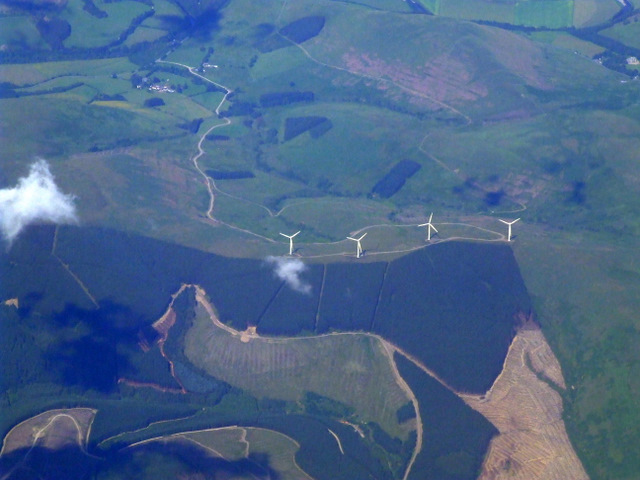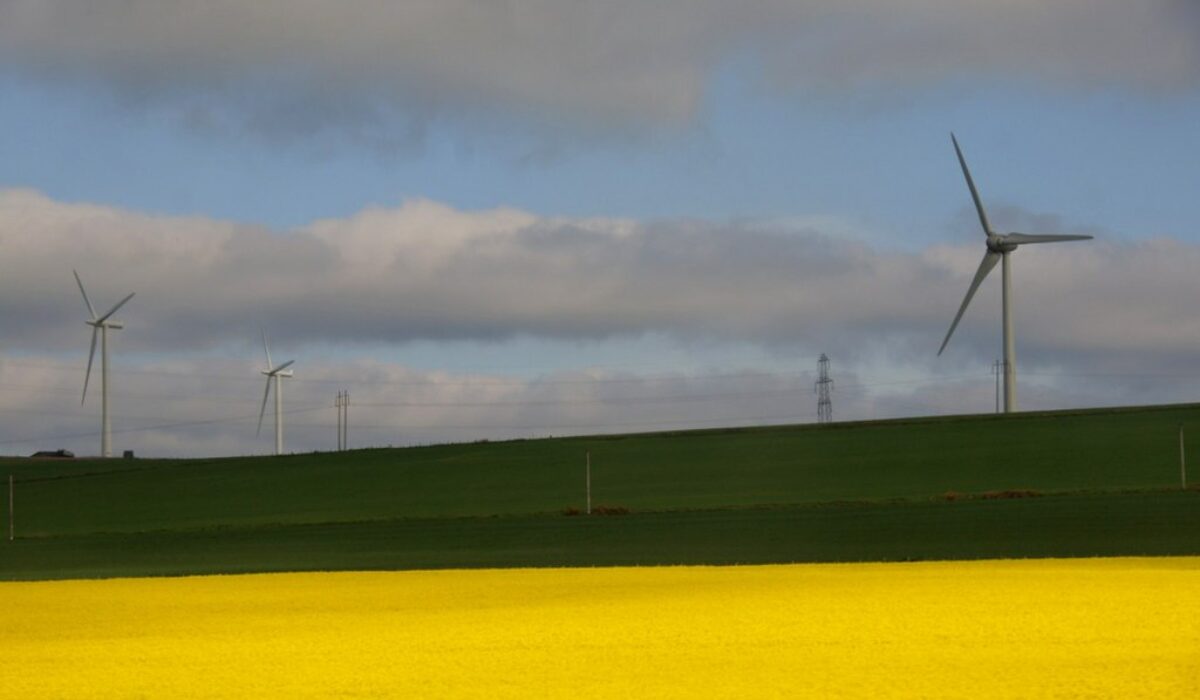Some of Scotland’s biggest ‘local’ wind farms are owned as far afield as the Cayman Islands and Canada, The Ferret can reveal, prompting claims the Scottish Government is “misleading” the public over its community energy targets.
The Scottish Government has a target to bring much more “community or locally owned” renewable energy online by 2030.
But its definition of local energy includes projects owned by farms, estates, and businesses, and the majority of projects installed so far are privately owned which means there is no guarantee they will not be sold on.
An analysis by The Ferret has found that some projects counted towards the government’s target are ultimately owned by multinational investors registered abroad, in tax havens, or in other parts of the UK.
Critics said our findings showed that the Scottish Government was “bending the definition of community energy beyond breaking point”.
The Scottish Trade Unions Congress said people would be “staggered” to find out the “majority of our ‘community energy’ projects are held in private hands”. Its general secretary, Roz Foyer, said achieving the 2030 target would be “meaningless” if it is delivered by “landowners, or projects linked to tax havens”.
The Scottish Government said its database of local and community projects “is compiled from a variety of sources and it is not always practical to update this in real time”. A spokesperson said the government was “clear that increasing renewable energy must benefit people across Scotland”.

Channel, Caymans and Canada
The Scottish Government has set a target of having 2,000 megawatts (MW) of “community or locally owned” renewable energy installed in Scotland by the end of the decade.
Meeting the target is important, it says, to ensure locals benefit from nearby renewables projects and for building an energy system which is “shaped by and for the people of Scotland”.
The Scottish Government claims that at the end of 2022, 908MW of community or local energy had come online.
Our analysis looked at the 81 Scottish renewable projects that are publicly listed as locally or community owned by Local Energy Scotland and have a generation capacity of over 1MW.
We used Companies House filings and local authority planning documents to trace the current owners of the projects.
The largest local project now owned outside Scotland was the five-turbine, 12.5MW Craig Wind Farm near Langholm in Dumfries and Galloway. It is directly owned by Craig Wind Farm Limited whose local directors resigned in 2012.
Craig Wind Farm Limited is now registered at an address in London, and its parent company is Temporis Renewable Energy LP, which has its registered office in the Cayman Islands according to the most recent accounts.
Scotland’s offshore wind has been sold off to the multinationals, and even a majority of our ‘community energy’ projects are held in private hands.
Roz Foyer, STUC
Temporis Renewable Energy LP is itself a subsidiary of Temporis Capital, a London-based investment company.
The three-turbine Hillhead of Auquhirie wind farm in Aberdeenshire is also listed as locally owned. Its direct owner, Auquhirie Land Company Limited, is registered on Castle Terrace in Edinburgh.
But its parent company is Fern Energy Wind Holdings, registered in London. Fern is itself controlled by the fund manager, Octopus, and is wholly owned by investors in the Octopus Inheritance Tax Service, which seeks to invest in companies which qualify for relief from inheritance tax.
The Strath of Brydock wind farm near the Moray Coast is listed as a local project but directly owned by a firm registered in Preston in the north of England. Its controlling party is Resonance British Wind Energy Income Limited, which is registered on the Channel Island of Guernsey and a subsidiary of Resonance Asset Management.
Resonance is also listed as the ultimate owner of three ‘locally owned’ wind turbines at Bonerbo near the village of Dunino in Fife via another Guernsey holding company.
The 2.4MW Upper Ardgrain wind farm near Ellon in Aberdeenshire is now ultimately owned by Elm Wind Holdings Limited, a subsidiary of another London investment company, Elm Trading.
Brockholes wind farm – three turbines in the Scottish Borders – is ultimately owned by Eolian Three, an investment fund managed by Broadview Energy. Eolian Three’s controlling party is registered in Quebec, Canada, according to Companies House filings.

‘Misleading’
The Energy Saving Trust has been monitoring the Scottish Government’s progress on community and local renewables since 2011.
The definition of community or locally owned it uses includes ownership by a wide range of organisations, including farms, estates, local businesses, local authorities, housing associations and community groups.
Of the 908MW of locally owned capacity which was reported to have come online by the end of 2022, the majority – 53 per cent – is owned privately by farms, estates or local businesses.
Community Energy Scotland – which provides advice to communities who want to own renewable energy – has been critical of the inclusion of privately owned projects in the Scottish Government’s local and community energy target.
“The conflation of wholly owned community energy with ‘local energy’ which includes offshore owned developments is not appropriate and wholly incomparable to the point of misleading,” its policy manager, Kristopher Leask, told The Ferret.
Leask pointed out that new community projects provide “34 times” more financial benefit to locals than private ones. “This is a very significant difference and highlights the long-term financial benefit that these projects bring to the local communities in which they are sited,” he argued.
STUC general secretary, Roz Foyer, said our findings were part of a wider pattern of Scotland’s renewables being snapped up by big investors. “Scotland’s offshore wind has been sold off to the multinationals, and even a majority of our ‘community energy’ projects are held in private hands,” she said.
Foyer continued: “People in Scotland will be staggered to find that the Scottish Government is counting projects linked to tax havens in their community energy figures.
“Meeting the 2GW target is an important milestone for tracking how much of our energy we control but this will be meaningless if it’s delivered by landowners, or projects linked to tax havens.”
Foyer added that there was an “urgent need” for the Scottish Government to focus on encouraging community and local authority-owned renewables because these projects ensure “the most benefit to people across Scotland”.
Instead of bending the definition of community energy beyond breaking point, the Scottish Government should be ensuring greater public ownership including by supporting councils.
Rosie Hampton, Friends of the Earth Scotland
Friends of the Earth Scotland campaigner Rosie Hampton argued that it is “not remotely credible” to claim the projects highlighted by The Ferret as “community or local energy”.
Hampton added: “Instead of bending the definition of community energy beyond breaking point, the Scottish Government should be ensuring greater public ownership including by supporting councils to develop more locally-owned renewables, and removing the barriers to true community ownership.
A Scottish Government spokesperson said: “The database holding information on all community and locally-owned installations in Scotland is compiled from a variety of sources and it is not always practical to update this in real time.
“However, we will explore with Local Energy Scotland, which administers the database, whether further actions can be taken to ensure the database remains up to date.”
The companies that ultimately own all of the wind farms named in this story have all been asked to comment.
A spokesperson for the Energy Saving Trust said it is “possible in some cases ownership may change over time” and that it adds these “changes into the database.
“The statistics remain the most accurate estimate of Scottish community and locally owned renewables available. Energy Saving Trust keeps its processes under review to ensure the data remains as accurate as possible”.
Main image: AlbertPego/iStock
This Ferret story was also published with the Herald. Our partnerships with other media help us reach new audiences and become more sustainable as a media co-op. Join us to read all our stories and tell us what we should investigate next.














